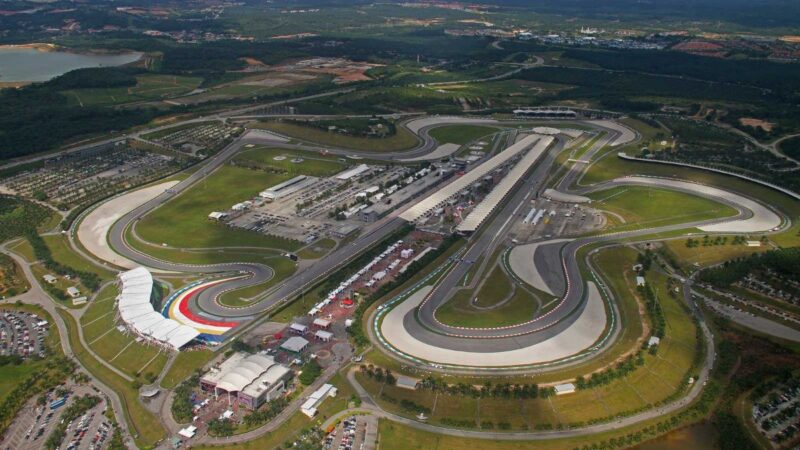Although it no longer hosts F1 events, the Sepang Circuit remains on the MotoGP calendar and is active with various motor activities, track days, and corporate events.
Recently, discussions about the return of the F1 to Sepang have been circulating on social media, with some claiming that F1 drivers are eager to race in Malaysia once again.
Let’s now explore seven facts about this world-class circuit that you may not be aware of.
1. Designed by Hermann Tilke
The Sepang International Circuit was designed by the German architect Hermann Tilke, who previously designed the A1-Ring circuit in Austria. Tilke created a circuit that is undulating and fast for Sepang, dominated by two main straightaways.
The design of Sepang draws inspiration from local elements, for example, the grandstand canopies are shaped like the leaves of oil palm trees, which are a prominent crop in the area surrounding the circuit.
Construction work began in December 1996, and the circuit was completed in 1998 at a cost of RM286 million.
2. Became one of the longest F1 circuits
The Sepang Circuit features 15 turns and 8 straight stretches with a minimum width of 16 meters, expanding to 20 meters in some sections. The completed Sepang International Circuit has a length of 5,543 meters (one lap), making it one of the longest circuits on the F1 and MotoGP calendars. The only longer circuits are Spa-Francorchamps in Belgium and Silverstone in England.
When it was completed and opened to the public, the Sepang Circuit was the most advanced F1 circuit in the world. However, since then, many newer and more advanced circuits have emerged worldwide, with most of them being designed by Tilke.
3. The only Japan Super GT venue outside Japan
In addition to world-class racing events like F1 and MotoGP, the Sepang International Circuit is also included in the calendar of other prestigious races, including the Japan Super GT.
Interestingly, the Sepang Circuit is the only circuit outside Japan to host a round of the Japan Super GT. This makes Sepang very unique for this event due to its extreme hot and rainy weather conditions.
4. Extreme weather
Speaking of the weather, the ambient temperature at the Sepang Circuit can reach up to 60 degrees Celsius, a challenging temperature for both the vehicles and the drivers.
Later, after the scorching heat in the midday, heavy rain can fall in the afternoon. This weather challenge is one of the unique features of Sepang that is not found in other circuits, meaning that racing teams need to strategically plan pit stops and tire changes.
Additionally, the F1 race in 2009 was once stopped due to extremely heavy and dangerous driving conditions caused by rain.
5. Malaysian F1 drivers
The Sepang Circuit has seen two Malaysian drivers who have driven in F1. They are Alex Yoong and Fairuz Fauzy.
Alex Yoong drove for the Minardi team in 2002, achieving a best finishing position of seventh place during the Australian Grand Prix.
Fairuz Fauzy is also among the elite group who have driven F1 cars, but as a test driver for the Lotus team in 2010.
6. Proton Satria GTI before the GP cars
Although the Sepang Circuit is renowned for hosting F1 races and other world-class sports events, we should be proud because a Proton car actually “inaugurated” the circuit a few days before the first Malaysian Grand Prix in 1999.
The car in question was the Proton Satria GTI, driven by Tiff Needell, a motoring media host and former professional racer. He also competed in Malaysia, but at the Batu Tiga Circuit in Shah Alam in the 1980s.
7. Tragedy of Marco Simoncelli
As everyone knows, motorsport is a high-risk sport, despite always prioritizing high safety standards. The Sepang International Circuit once claimed the life of a MotoGP rider, Marco Simoncelli. In an incident on October 23, 2011, the Italian rider fell during the sixth lap and was subsequently hit by another rider.
